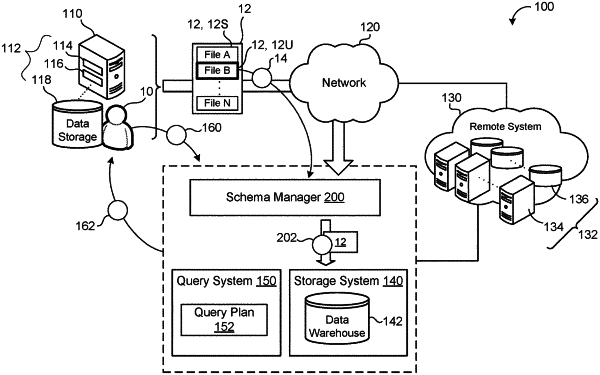| CPC G06F 16/86 (2019.01) [G06F 16/2282 (2019.01); G06F 16/2452 (2019.01); G06F 16/258 (2019.01)] | 18 Claims |

|
1. A computer-implemented method when executed by data processing hardware causes the data processing hardware to perform operations comprising:
receiving user data from a user of a query system, the user data comprising semi-structured user data, the query system in communication with a database, the database comprising a table comprising semi-structured data and structured data;
receiving an indication that the semi-structured user data fails to comprise a fixed schema;
in response to the indication that the semi-structured user data fails to comprise the fixed schema, extracting, without user input, a schema for the semi-structured user data by:
parsing the semi-structured user data into a plurality of data paths; and
extracting a data type associated with each respective data path of the plurality of data paths;
storing, according to the extracted schema, the semi-structured user data as a row entry in the table of the database in communication with the query system, wherein each column value of the extracted schema associated with the row entry corresponds to a respective one of the plurality of data paths and the data type associated with the respective data path;
receiving, from the user of the query system, a query for data associated with the database; and
in response to the query:
determining, based on the extracted schema, a respective data path of the stored semi-structured data that is responsive to the query;
generating, using the extracted schema, a query response comprising a respective column value of the row entry corresponding to the respective data path of the stored semi-structured data responsive to the query; and
transmitting the query response to the user.
|